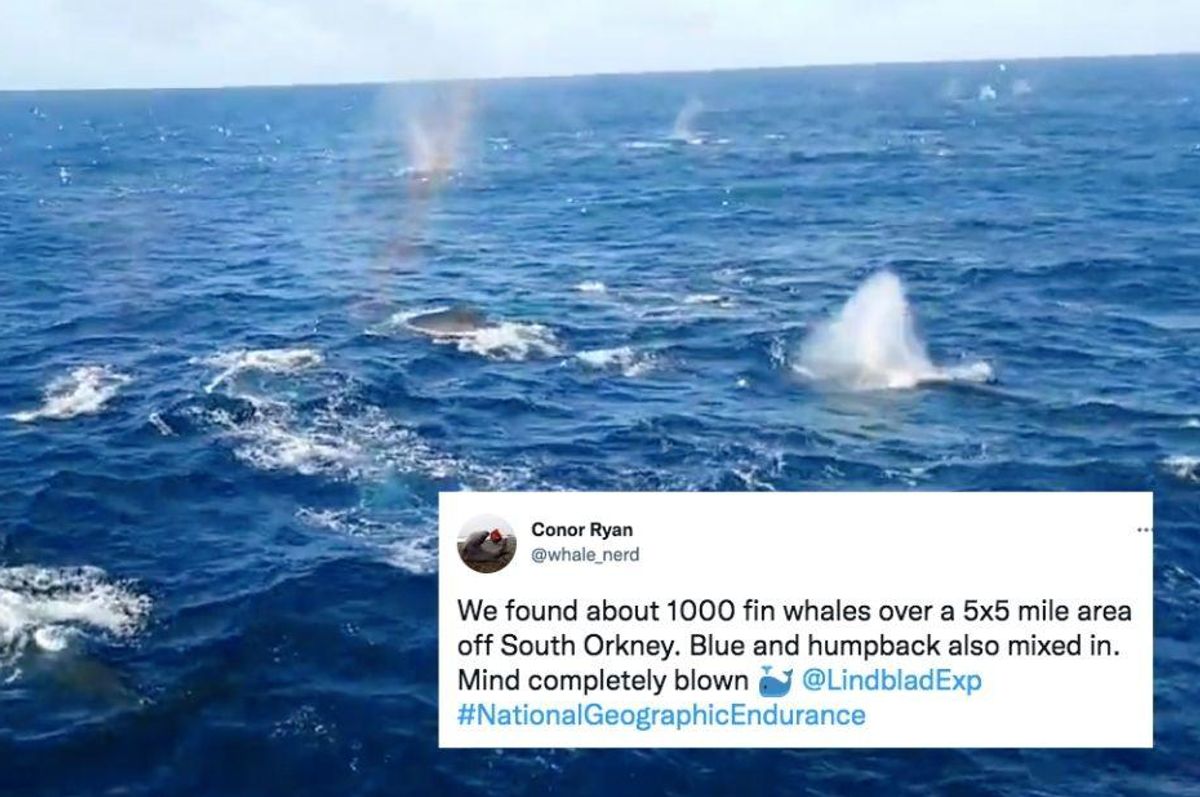
Conor Ryan has seen his fair share of whales, and his Twitter handle—@whale_nerd—isn’t just a cutesy nickname. Ryan was just 14 years old when he published his first peer-reviewed scientific paper on killer whales with his best friend, Peter Wilson, in 2001. As a wildlife photographer, a zoologist specializing in marine biology and an expert in baleen whales and small cetaceans, he knows when he’s looking at something special in the sea.
In other words, when Conor Ryan says his mind is “completely blown” by a whale sighting, you know it’s a big deal. Seeing 1,000 fin whales at once? That’s a very big deal.
Fin whales are the second-largest animal in the world, second only to the blue whale. In the 20th century, fin whales were hunted to near extinction before commercial whaling was outlawed. Nearly 725,000 were killed in the Southern Hemisphere alone in the mid- 1900s, and though whaling is no longer a threat, fin whales are still on the endangered species list.
Fin whales get their name from an easy-to-spot fin on their backs. Imagine seeing 1,000 of any endangered species in one location, much less 1,000 of these 85-foot, 80-ton whales all feeding in a single location.
Ryan captured the scene on film and shared it on Twitter, writing, “We found about 1000 fin whales over a 5×5 mile area off South Orkney. Blue and humpback also mixed in. Mind completely blown.” The video shows a cluster of whales spouting as far as the eye can see.
We found about 1000 fin whales over a 5×5 mile area off South Orkney. Blue and humpback also mixed in. Mind completely blown @LindbladExp #NationalGeographicEndurancepic.twitter.com/xtdvexXwI5— Conor Ryan (@Conor Ryan)
1642121461
According to The Guardian, Ryan spotted the whales from the National Geographic Endurance polar cruiser, in an area between the South Orkney Islands and the Antarctic peninsula. Their ship was in an area with four large krill fishing vessels, which explains the feeding frenzy.
Ryan said it might be “one of the largest aggregations of fin whales ever documented” and that his estimate of 1,000 whales was a conservative one.
“Words fail me,” Ryan told The Guardian. “I have seen maybe 100 fins here before in previous years. Thousands of chinstrap penguins, petrels, and albatrosses, too … It was unusually calm weather and unusually good visibility.”
Though commercial whaling laws have greatly reduced the decimation of whale populations we saw in the 1900s, whales still face threats from human activity. According to NOAA, the main threat to fin whales today is vessel strikes. Cargo and cruise boat ships have increased in number in the past few decades, which increases the risk of running into whales, but they aren’t the only ships that pose a threat. Last year, two dead fin whales had to be dislodged from the hull of an Australian Navy ship after it pulled into the naval pier in San Diego. The fact that they are still considered endangered means we have to stay vigilant about their protection.
But as author Philip Hoare wrote in The Guardian, “In a world constrained by woe and threats to democracy…1,000 fin whales can’t help but lift our hearts.” Such a number is decidedly good news, which is always worth celebrating and which provides a beacon of hope that we can make impactful changes that help our planet when we choose to.
